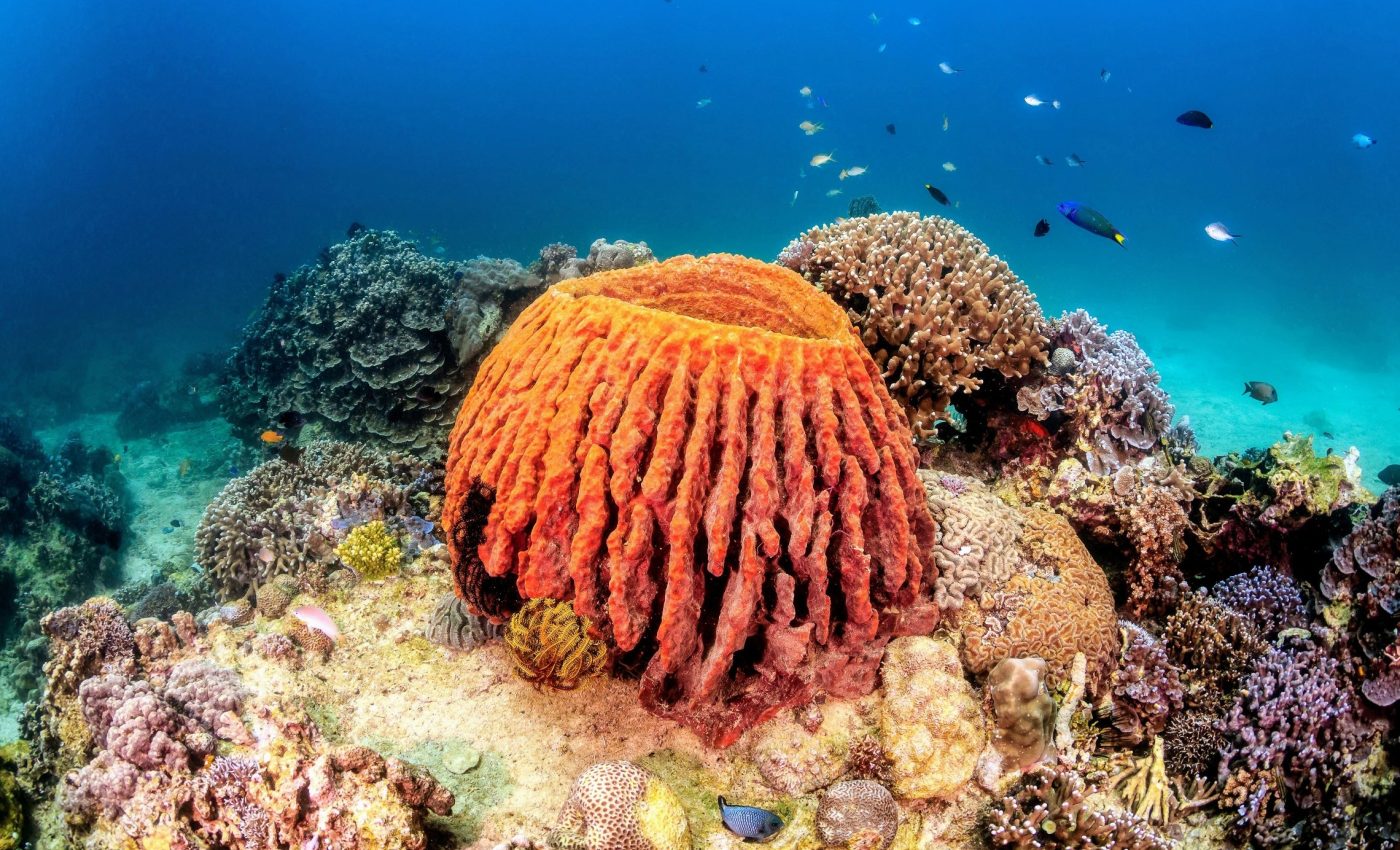
Sponges accumulate toxic metals as a survival strategy
Sponges in the deep waters of the Gulf of Eilat harbor a remarkable secret: they have evolved to be toxic in a heavy metal way.
In a groundbreaking study conducted at Tel Aviv University, researchers have uncovered that these seemingly ordinary sponges contain an extraordinarily high concentration of the toxic mineral molybdenum (Mo), using it as a unique defense mechanism to ward off predators.
This discovery not only sheds light on the fascinating survival strategies of sponges but also reveals a symbiotic relationship with bacteria that enables them to manage such lethal amounts of this metal.
Nature’s toxic tale: how sponges harness molybdenum
Sponges, the earliest multicellular organisms known to science, inhabit marine ecosystems and play a crucial role in the planet’s carbon, nitrogen, and silicon cycles.
Remarkably, a single sponge can process and filter a volume of seawater 50,000 times its body weight daily.
With such vast quantities of water flowing through them, sponges inevitably gather various trace elements, prompting scientists to question how they handle potentially lethal amounts of substances like arsenic and molybdenum.
“Twenty to thirty years ago, researchers from our lab collected samples of a rare sponge called Theonella conica from the coral reef of Zanzibar in the Indian Ocean and found in them a high concentration of molybdenum,” explains Shoham. “Molybdenum is a trace element, important for metabolism in the cells of all animals, including humans, and widely used in industry. In my research, I wanted to test whether such high concentrations are also found in this sponge species in the Gulf of Eilat, where it grows at depths of more than 27 meters. Finding the sponge and analyzing its composition, I discovered that it contained more molybdenum than any other organism on Earth: 46,793 micrograms per gram of dry weight.”
Unraveling the molybdenum mystery
As intriguing as this find was, it raised a critical question: How does the sponge survive the toxic accumulation of molybdenum?
The answer lies with the bacteria Entotheonella sp., which plays a key role in the clever symbiotic relationship between the sponge and its microbiome.
Shoham adds, “Like all trace elements, molybdenum is toxic when its concentration is higher than its solubility in water. But we must remember that a sponge is essentially a hollow mass of cells with no organs or tissues. Specifically in Theonella conica, up to 40% of the body volume is a microbial society—bacteria, viruses, and fungi living in symbiosis with the sponge. One of the most dominant bacteria, called Entotheonella sp., serves as a ‘detoxifying organ’ for accumulating metals inside the body of its sponge hosts. Hoarding more and more molybdenum, the bacteria convert it from its toxic soluble state into a mineral. We are not sure why they do this. Perhaps the molybdenum protects the sponge by announcing: ‘I’m toxic! Don’t eat me!,’ and in return for this service, the sponge does not eat the bacteria and serves as their host.”
Tomorrow’s solutions today
While enticing, the prospect of extracting molybdenum from these sponges is impractical due to their scarcity, fragility, and the minimal weight of molybdenum they carry.
“The concentration is very high,” says Shoham, “but when translated into weight, we could only get a few grams from every sponge, and the sponge itself is relatively rare. Sponges are grown in marine agriculture, mostly for the pharmaceutical industry, but this is quite a challenging endeavor. Sponges are very delicate creatures that need specific conditions.”
However, their unique bacterial companions, Entotheonella sp., hold the potential for future research with their metal-accumulating abilities.
Previous studies from the same Tel Aviv University lab found immense concentrations of other toxic metals like arsenic (As) and barium (Ba) in a close relative of Theonella conica, named Theonella swinhoei. “In this case too,” Shoham notes, “Entotheonella was found to be largely responsible for hoarding the metals and turning them into minerals, thereby neutralizing their toxicity. Continued research on the bacteria can prove useful for treating water sources polluted with arsenic, a serious hazard that directly affects the health of 200 million people worldwide.”
In the end, what started as a dive into the intriguing sponge’s world led scientists on a voyage of discovery, revealing the power of symbiosis and the potential for new technological advancements rooted in the secrets of our ocean’s depths.
The full study was published in the journal Science Advances.
—–
Like what you read? Subscribe to our newsletter for engaging articles, exclusive content, and the latest updates.
Check us out on EarthSnap, a free app brought to you by Eric Ralls and Earth.com.
—–













